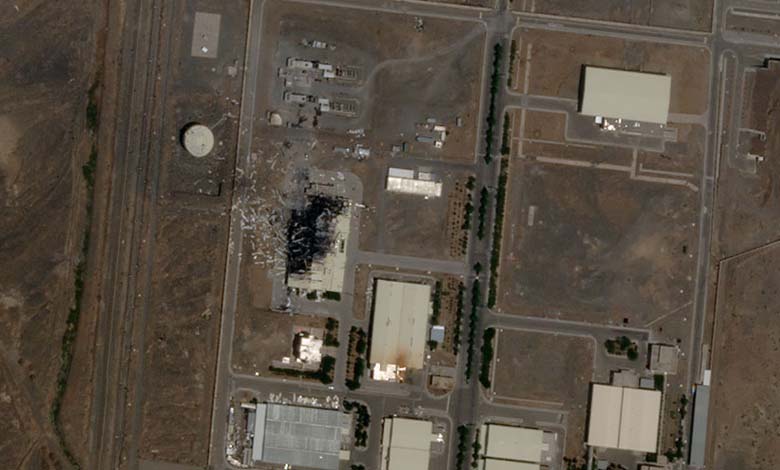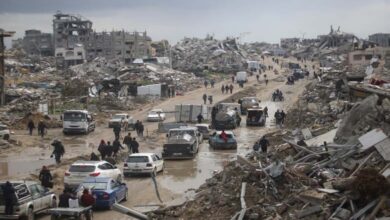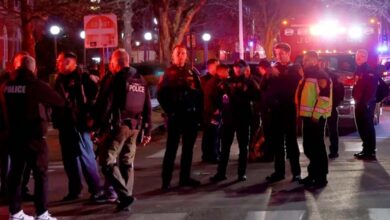Israel’s Strikes on Iranian Nuclear Facilities: Conflicting Assessments and Unclear Outcomes

Amid escalating tensions between Tehran and Tel Aviv, Israel has launched unprecedented strikes targeting key facilities in Iran’s nuclear program.
-
“Iran’s Nuclear Program”: IAEA Condemnation and Tehran’s Response
-
Iran boosts uranium enrichment in response to IAEA pressure
Last Friday, Tel Aviv carried out a surprise and large-scale military operation against Iran, which responded by launching missiles and drones at Israel.
Israel’s assault targeted three major nuclear sites — Natanz, Isfahan, and Fordow — along with several senior scientists involved in nuclear research and development.
According to CNN, the strikes focused on at least two sites: Natanz and Isfahan.
-
IAEA calls on Tehran to put relations back on track
-
IAEA accuses Iran of increasing uranium enrichment
However, many details remain unclear — not least because Iran’s most sensitive nuclear infrastructure is buried deep underground — and, as expected, each side has provided conflicting assessments.
Israeli evaluations suggest the strikes on Natanz and Isfahan caused “significant damage” to certain nuclear infrastructure, while Tehran insists the impact was “limited.”
This discrepancy highlights the difficulty of independently verifying the results, especially since a large part of Iran’s nuclear infrastructure is heavily fortified underground.
-
Nuclear: Iran announces removal of two IAEA surveillance cameras
-
Iran threatens International Atomic Energy Agency (IAEA)
Can Israel Destroy Iran’s Nuclear Program?
Ali Vaez, a senior analyst on Iran at the International Crisis Group, told AFP: “Israel can damage Iran’s nuclear program, but it is unlikely to destroy it.”
He emphasized that Israel lacks the heavy bombs needed to “demolish the fortified Natanz and Fordow facilities” buried deep within mountains.
-
Iran refuses to give nuclear site images to IAEA
-
IAEA report: Iran starts to feed uranium gas into advanced centrifuges underground
Kelsey Davenport, an expert at the Arms Control Association, added: “You cannot eliminate the knowledge Iran has acquired, even if nine nuclear scientists were killed in the strikes.”
Ali Vaez told CNN that “the entire nuclear supply chain was disrupted,” but noted: “It can be reconnected within months because Iran possesses the knowledge and materials.”
“This is not a problem that can be solved with airstrikes alone,” he added.
-
Bushehr Reactor… Nuclear Fear Factor Deters Israeli Strikes
-
Natanz: Iran’s Largest Uranium Enrichment Site Hit by Israeli Strikes
Natanz
At Natanz, American sources reported that the strikes “caused a power outage in the underground levels where centrifuges are stored,” potentially affecting their operational capacity.
Two U.S. officials told CNN that initial assessments suggest the Israeli strikes on the facility “were highly effective, going well beyond surface-level damage to exterior structures and cutting off electricity in the lower levels where centrifuges used for uranium enrichment are stored.”
CNN also noted that the Israeli attacks “destroyed the upper section of the Natanz pilot fuel enrichment plant.”
-
Nuclear Talks – Iran Announces Withdrawal from Sixth Round
-
Is an Attack Imminent? US Newspaper Reveals Israeli and Iranian Preparations
Natanz is a sprawling site that has been operational since 2003, where Iran has enriched uranium up to 60% purity, according to the International Atomic Energy Agency (IAEA).
Weapons-grade uranium is enriched to 90% purity.
The IAEA reported that Natanz’s electrical infrastructure — including the main power supply building and backup generators — was also destroyed.
This assessment is echoed by two U.S. officials who told CNN that power was lost in the facility’s lower levels, where the centrifuges are stored.
-
Trump Doubts.. Iran Threatens: Is the Nuclear Deal Doomed Before It Begins?
-
Iran Reveals Nuclear Target Bank Inside Israel
Experts emphasize the significance of this part of the operation, as much of the Natanz facility is heavily fortified and located underground.
Centrifuges enrich uranium by spinning gas at extremely high speeds. Ali Vaez explained: “These machines spin at the speed of light, and if they stop suddenly, some may explode or suffer irreparable damage.”
Natanz comprises six above-ground buildings and three underground ones, two of which can house up to 50,000 centrifuges, according to the nonprofit Nuclear Threat Initiative (NTI).
-
Iran’s Intelligence Minister to Soon Reveal Israel’s Hidden Treasure
-
Iran Criticizes U.S. Sanctions Policy Ahead of Key Cairo Nuclear Meeting
There has been no broader radiological impact. The IAEA stated: “Radiation levels outside the Natanz site remained unchanged and within normal limits.”
However, it added: “Due to the strikes, there is some radiological and chemical contamination within the Natanz facilities,” though the levels are considered manageable.












